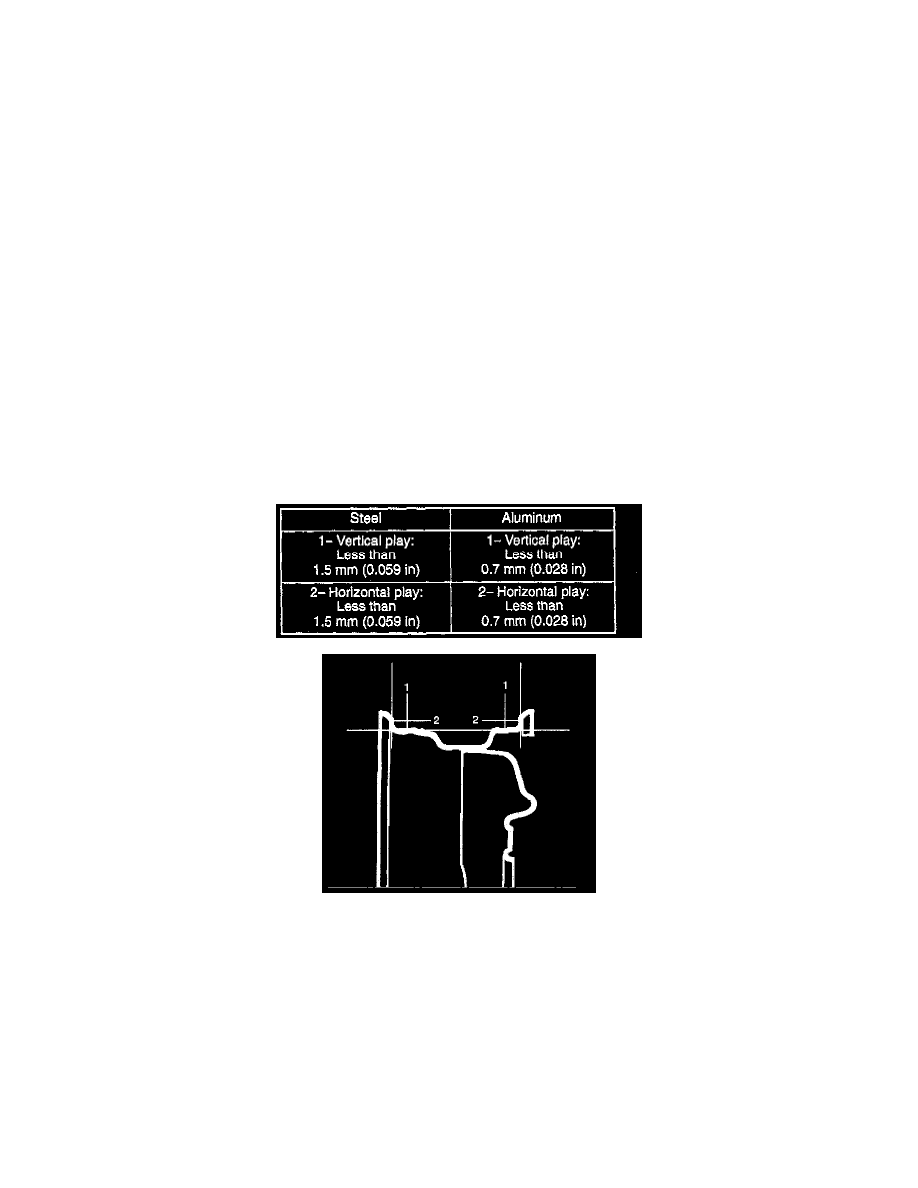Rodeo S 2WD L4-2.2L (1999)

Tires: Service and Repair
Tire Replacement
TIRE REPLACEMENT
When replacement is necessary, the original metric the size should be used. Most metric tire sizes do not have exact corresponding alphanumeric tire
sizes. It is recommended that new tires be installed in pairs on the same axle. If necessary to replace only one tire, it should be paired with tire having
the most tread, to equalize braking traction.
CAUTION: Do not mix different types of tires such as radial, bias and bias-belted tires except in emergencies, because vehicle handling may be
seriously affected and may result in loss of control.
Tire Dismounting
Remove valve cap on valve step and deflate the tire. Then use a tire changing machine to mount or dismount tires. Follow the equipment
manufacturer's instruction. Do not use hand tools or tire lever alone to change tires as they may damage the tire beads or wheel rim.
Tire Mounting
Rim bead seats should be cleaned with a wire brush or coarse steel wool to remove lubricants, and light rust. Before mounting a tire, the bead area
should be well lubricated with an approved tire lubricant. After mounting, inflate the tire to 196 kPa (28 psi) so that beads are completely seated.
Inflate the air to specified pressure and install valve cap to the stem.
WARNING: Never stand over tire when inflating. bead may break when bead snaps over rim's safety hump and cause serious personal
injury. never exceed 240 kPa (35 psi) pressure when inflating. if 240 kPa (35 psi) pressure will not seat beads, deflate, re-lubricate and
re-inflate. over inflation may cause the bead to break and cause serious personal injury.
Tire Repair
There are many different materials on the market used to repair tires. Manufacturers have published detailed instructions on how and when to
repair tires. These instructions can be obtained from the tire manufacturer if they are not included with the repair kit.
Wheel Inspection
Damaged wheels and wheels with excessive run-out must be replaced. Wheel run out at rim (Base on hub Bore):
